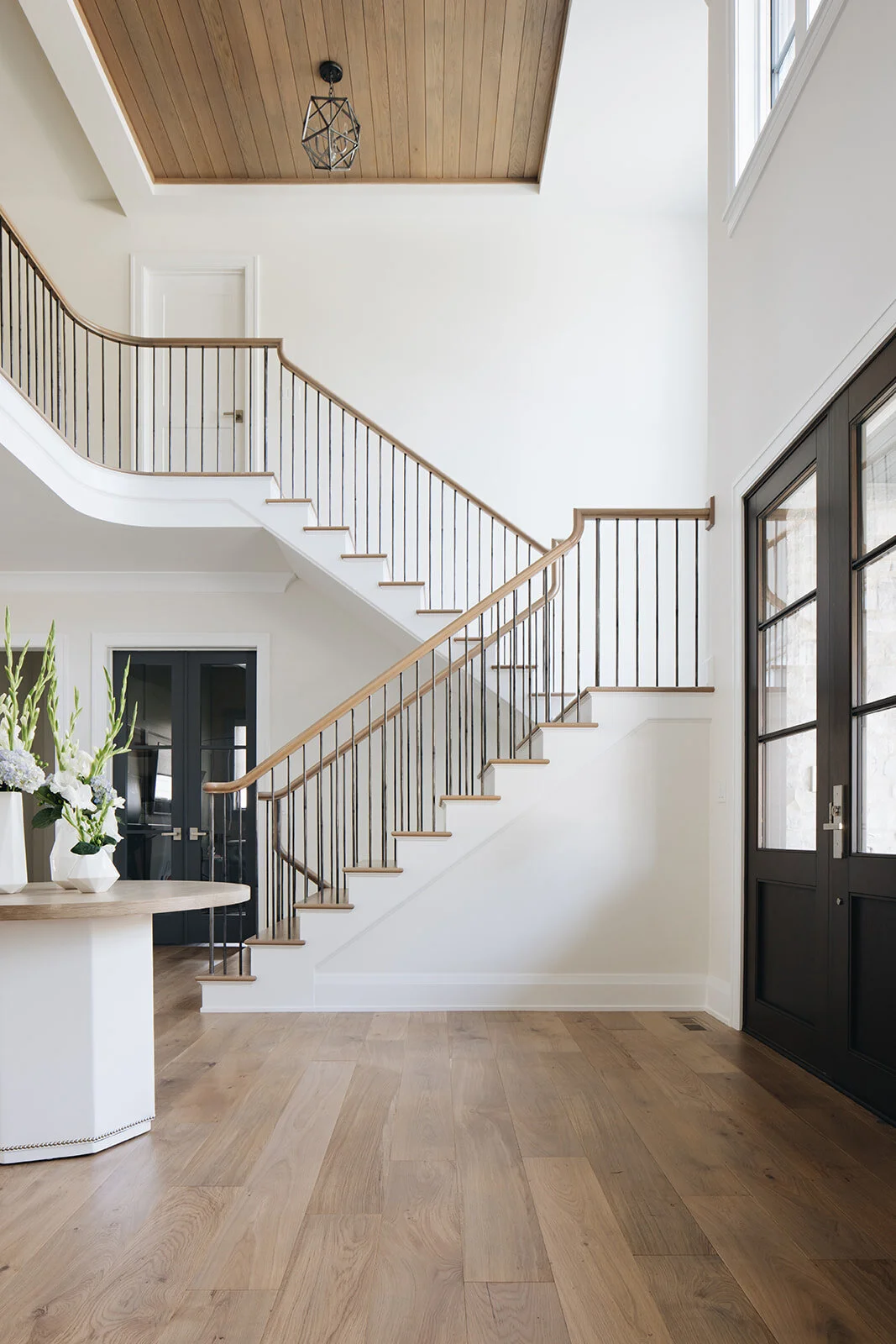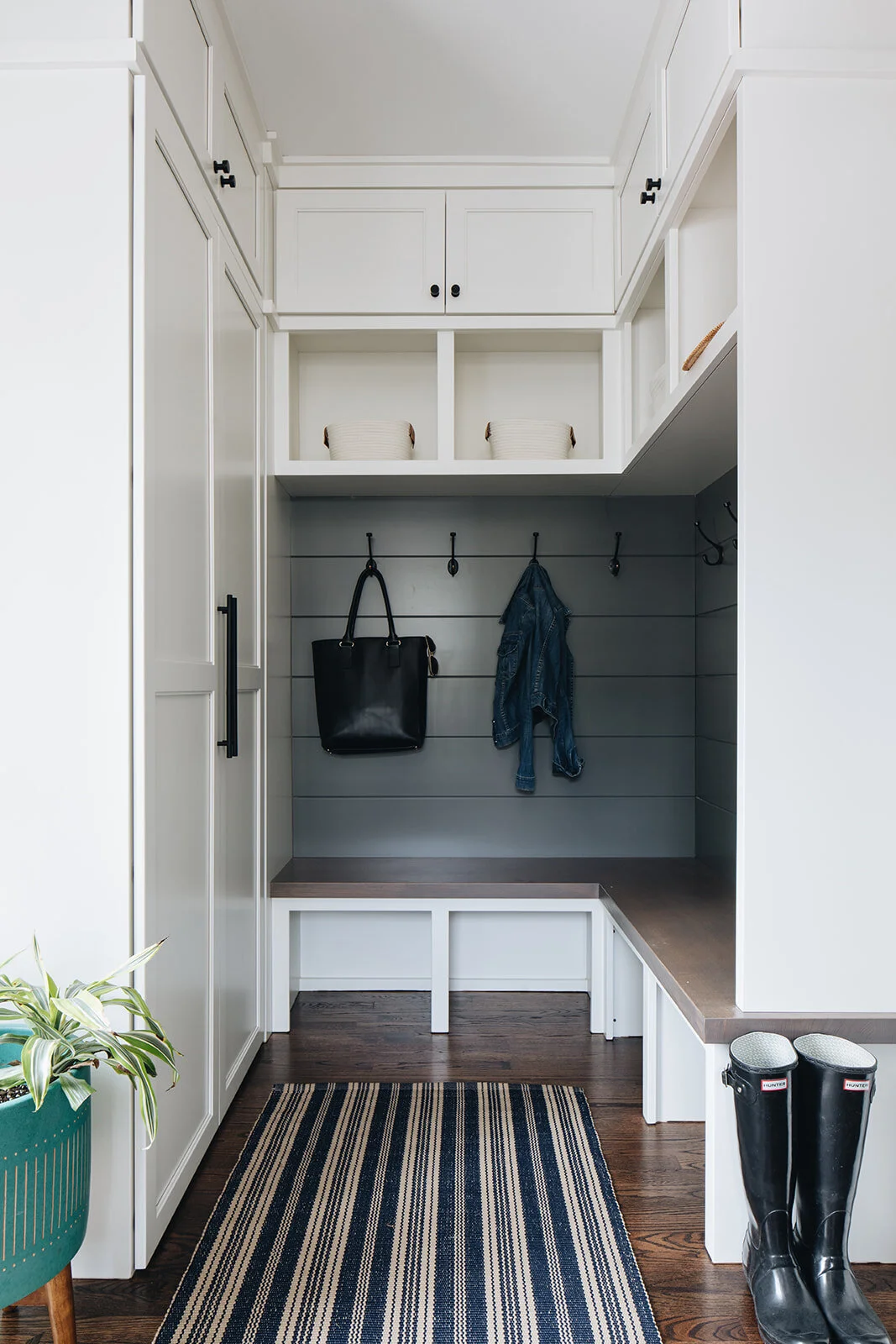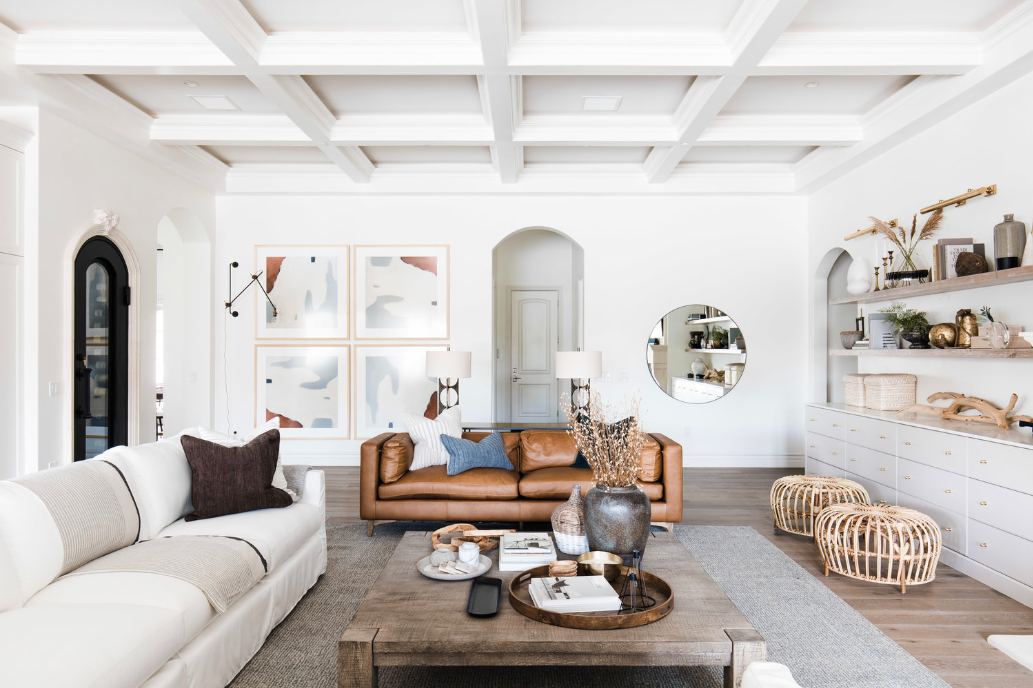FAQs: How Do I Combine Different Wood Tones?
A question I often get asked is “Can you mix different wood tones?” and my answer is always “Yes!”
Naturally, their next question is “Okay, but how?!”
Today, I’m going to share with you four easy steps to mixing wood tones. Try not to think of these as hard and fast rules, but more as guidelines to follow. Combining different wood tones is not just for the pros. By keeping a few things in mind you can achieve a beautiful, cohesive, and intentional look!
Step One: Consider the Undertones
There are 2 basic undertones when considering wood tones; warm and cool. These may also be referred to as the “temperature” of the wood. Warm tones are going to be reds, oranges, yellows, and pinks. Cool tones would be more in the range of black, blue, grey, with an occasional hint of green.
You should try to stay within the same family of undertones when mixing woods. Your dominant wood tone usually ends up being the flooring or whatever is the largest piece of furniture in the room.
This charming guest house done by Marie Flanigan Interiors is a beautiful example of how to mix wood tones in a rather compact setting. There is little separation from the dining area to the conversation area, but the space feels very cohesive with the use of various wood tones and warm whites.
I’d like to hide away here for a weekend or two!
Step Two: Grain, Stain + Finish
Woods are obviously a natural product and different species will lend themselves to distinctive characteristics. Knowing the look you are trying to achieve will help you determine what type of wood species to start with.
A friendly reminder - the characteristics you fall in love with on a sample swatch or on a display piece in a showroom are unique to that specific piece. Loving natural wood comes with the understanding that it’s going to age over time and slight variations are to be expected from piece-to-piece. If a uniform look is what you’re after you may need to consider a faux finish or engineered option.
White Oak is durable, resistant to warping, and tends to have a light warm undertone with a grainy texture, making it the perfect flooring choice to brighten up any home.
Poplar is another warm-toned wood that has very little color or grain of its own. It’s a good choice for millwork that is going to be stained, painted another color, or whitewashed.
Walnut is a popular choice when trying to achieve a cooler-toned look. It’s a very hard, sturdy wood, making it a smart choice for constructing furniture as well as flooring installation. Its natural characteristics provide a nice base for dark, rich-toned stains.
Leanne Ford Interiors | Photo by Alexandra Ribar
Of course, there are many more wood species to use for various projects throughout your home, these are just a few examples to show you how the wood’s natural coloring and grain pattern can differ.
The purpose of a finish is to protect the wood without influencing the temperature too much. A matte, semi-gloss or high-gloss finish will affect the end result. There are positives and negatives to each option depending on where it is being used. Consult with your pro to discuss which is best for your unique setting.
Jessie D. Miller Designs | Photo by Megan Lorenz Photo
This glamorous lounge, by Jessie D. Miller Designs, is a stunning example and great use of a high-gloss or lacquered finish.
Step Three: Contrast Is Your Friend
While it’s recommended you stay within the same tonal family when mixing woods, you should not neglect a contrast of color. A very light neutral-colored floor is a great base for a medium- to dark-toned dining table. Contrast allows your eye to visually make a separation between the two wood tones.
Amber Interior Design | Photo by Tessa Neustadt
Step Four: Layered Texture
If you have rather monochromatic wood-toned pieces I would suggest bringing in a range of different textures. This will create visual interest throughout your space, allowing your eye to take in each individual aspect and add an element of softness. Reclaimed wood or live-edge furnishings can add a level of uniqueness.
Nam Dang-Mitchell Design Inc (Fun Fact: Nam Dang-Mitchell is my Designer Idol, she can do no wrong in my eyes!)
Finally, when selecting wood flooring, cabinetry, or furniture pieces take samples home whenever possible to see how it’s going to look in your space! You should observe how the tones change throughout the day under natural and artificial lighting. Also, be sure to compare how the new pieces would blend in with other existing wood tones in your home.












